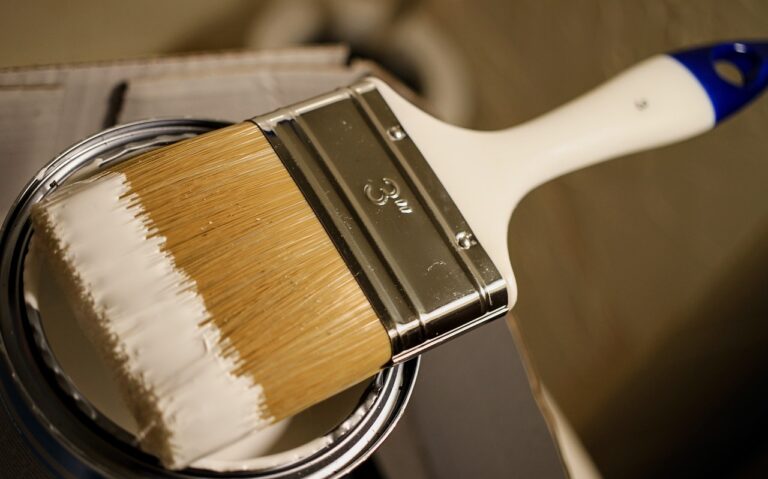Sustainable Practices in Beadwork and Embroidery
silverexch.com login, goldenexch, betbook 247.com:Sustainable Practices in Beadwork and Embroidery
In recent years, there has been a growing interest in sustainable practices across various industries, including the fashion and textile industry. As consumers become more aware of the environmental and social impact of their purchases, there is a demand for ethically produced and eco-friendly products. Beadwork and embroidery, which have a rich cultural heritage and are often associated with traditional craftsmanship, are no exception to this trend.
In this blog post, we will explore how beadwork and embroidery can be produced sustainably, highlighting practices that reduce environmental impact, support local communities, and promote ethical sourcing. Let’s delve into the world of sustainable beadwork and embroidery!
Sourcing Materials Responsibly
One of the key aspects of sustainable beadwork and embroidery is sourcing materials responsibly. This includes using materials that are eco-friendly, such as recycled beads and threads, as well as supporting fair trade practices. By sourcing materials from ethical suppliers who adhere to sustainable practices, artisans can ensure that their work has a positive impact on both people and the planet.
Choosing Quality Over Quantity
In a world where fast fashion and mass production dominate the market, it is important to emphasize the value of quality craftsmanship in beadwork and embroidery. By choosing quality materials and taking the time to create intricate designs, artisans can produce products that are not only beautiful but also long-lasting. This not only reduces the environmental footprint of their work but also promotes a culture of sustainability and appreciation for artisanal craftsmanship.
Embracing Traditional Techniques
Many traditional beadwork and embroidery techniques have been passed down through generations, preserving cultural heritage and craftsmanship. By embracing these traditional techniques and incorporating them into modern designs, artisans can create unique and authentic pieces that tell a story. This not only adds value to their work but also helps to sustain traditional artisanal skills and practices.
Supporting Local Communities
Sustainable beadwork and embroidery also involve supporting local communities and artisans. By purchasing products directly from artisans or cooperatives, consumers can ensure that their purchases have a positive impact on the communities where the products are made. This helps to create economic opportunities and empower artisans to preserve their cultural heritage and livelihoods.
Reducing Waste and Recycling
In a world where waste and pollution are major environmental issues, it is important for artisans to reduce waste and recycle materials whenever possible. By reusing leftover beads, threads, and fabrics, artisans can minimize their environmental impact and create unique designs that are eco-friendly. This not only reduces the amount of waste generated but also promotes a circular economy where materials are reused and repurposed.
Promoting Ethical Practices
Ethical practices are at the heart of sustainable beadwork and embroidery. This includes paying fair wages to artisans, ensuring safe working conditions, and promoting gender equality in the workplace. By working with artisans and suppliers who uphold these ethical standards, consumers can support businesses that prioritize social responsibility and uphold the rights of workers.
Frequently Asked Questions (FAQs)
1. Are all beads and threads used in beadwork and embroidery sustainable?
Not all beads and threads are sustainable, but there are eco-friendly options available, such as recycled beads and threads made from natural materials.
2. How can I support sustainable beadwork and embroidery as a consumer?
You can support sustainable beadwork and embroidery by purchasing products from artisans who prioritize sustainability, choosing quality over quantity, and educating yourself about ethical practices in the industry.
3. Why is it important to embrace traditional techniques in beadwork and embroidery?
Embracing traditional techniques helps to preserve cultural heritage, support artisanal skills, and create unique pieces that tell a story.
4. What can artisans do to reduce waste and recycle materials in beadwork and embroidery?
Artisans can reduce waste by using leftover materials, recycling beads and threads, and repurposing fabrics to create new designs.
5. How can I ensure that the beadwork and embroidery products I purchase are ethically produced?
You can ensure that the products you purchase are ethically produced by asking about the sourcing practices of the artisans and suppliers, supporting fair trade practices, and choosing products that align with your values.
In conclusion, sustainable beadwork and embroidery are not only beautiful forms of craftsmanship but also ethical and eco-friendly practices that support local communities and preserve cultural heritage. By choosing quality over quantity, sourcing materials responsibly, and embracing traditional techniques, artisans can create unique pieces that have a positive impact on both people and the planet. As consumers, we can support sustainable practices by educating ourselves about ethically produced products, supporting fair trade practices, and choosing products that align with our values. Together, we can promote a culture of sustainability and appreciation for artisanal craftsmanship in beadwork and embroidery.







